- News
- Reviews
- Bikes
- Components
- Bar tape & grips
- Bottom brackets
- Brake & gear cables
- Brake & STI levers
- Brake pads & spares
- Brakes
- Cassettes & freewheels
- Chains
- Chainsets & chainrings
- Derailleurs - front
- Derailleurs - rear
- Forks
- Gear levers & shifters
- Groupsets
- Handlebars & extensions
- Headsets
- Hubs
- Inner tubes
- Pedals
- Quick releases & skewers
- Saddles
- Seatposts
- Stems
- Wheels
- Tyres
- Tubeless valves
- Accessories
- Accessories - misc
- Computer mounts
- Bags
- Bar ends
- Bike bags & cases
- Bottle cages
- Bottles
- Cameras
- Car racks
- Child seats
- Computers
- Glasses
- GPS units
- Helmets
- Lights - front
- Lights - rear
- Lights - sets
- Locks
- Mirrors
- Mudguards
- Racks
- Pumps & CO2 inflators
- Puncture kits
- Reflectives
- Smart watches
- Stands and racks
- Trailers
- Clothing
- Health, fitness and nutrition
- Tools and workshop
- Miscellaneous
- Buyers Guides
- Features
- Forum
- Recommends
- Podcast
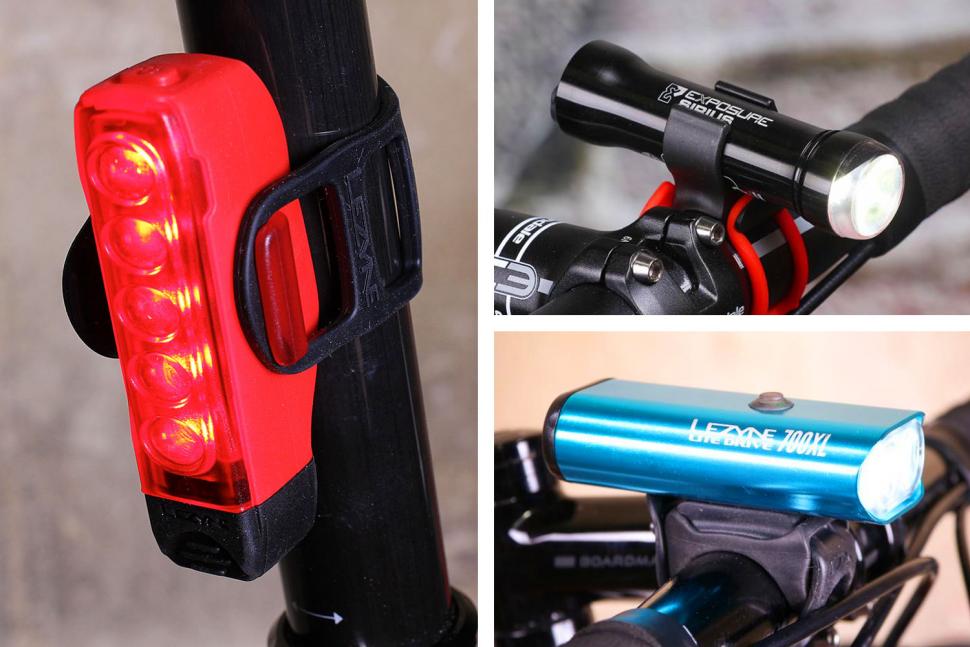 Should cyclists use daytime running lights Sept 2018
Should cyclists use daytime running lights Sept 2018Should cyclists use daytime running lights? Plus the best front and rear daytime cycling lights
You need front and rear lights for cycling in the dark, but do you also need to use lights in the daytime? We look at the argument for using lights during the daytime and round up a bunch of front and rear lights to consider if you do want to increase your visibility.
The best daytime running lights
- Lezyne Strip Drive Front — £29.49
- Magicshine Seemee 30 Combo — £24.99
- Giant Recon TL 200 rear light — £29.04
- Exposure Link Daybright — £55.96
- Blackburn DayBlazer 1100 — £55.99
- See.Sense Icon 2 rear light — £79.99
- Exposure Lights TraceR DayBright — £39.60
- Exposure Lights Sirius DayBright — £75
- Lezyne Strip Drive Pro 300 rear light — £52
- Lezyne Lite Drive 1000XL — £59.49
- Specialized Flux 900 Headlight — £69.99
- Bontrager Flare R City — £24
- Moon Comet-X front bike light — £15.75
It may not have escaped your attention that all new cars sold in the UK legally have to have daytime front lights. So should cyclists also be looking to boost their visibility when cycling in the daytime with front and rear lights? In a recent survey of 500 road.cc readers on Twitter, 52% said they do want daytime lights. It perhaps wasn't the result we were expecting.
Read more: The best front lights for cycling — beam comparison plus how-to-choose guide
To meet this demand, there are a growing number of bike brands marketing lights with daytime running modes, but what does this actually mean and are they any different to lights designed for nighttime cycling?
Exposure Lights has added a new Day Bright mode to its front and rear lights this winter. And it is more than just a flashing mode says Exposure’s Mark Swift. “The DayBright pulse pattern is the most noticeable to ensure it is recognised at distance on rural roads and also enable the light to cut through the noise of the urban town or city traffic and road distractions within daylight hours," he says.
“As the pulse pattern is not regular, once seen DayBright stays highlighted by the brain's receivers and ensures the cyclist is noticed,” adds Mark.
Why would a cyclist want to use lights during the daytime? Surely there’s no need when it’s light?
“Why not!” says Specialized’s William Watt. “Beyond smart responsible riding, visibility on the road is quite simply the most important investment a rider can make in their safety, particularly in a congested urban environment where every road user has a multitude of distractions. Daytime lights give the rider that extra layer of visibility on the road, particularly for that notorious black spot on the near side of traffic.”
It's not always bright and sunny during a typical UK winter day though. It’s often murky, drab and almost dark. Daytime lights can be used in these conditions says Exposure's Mark to help make cyclists stand out in changing light conditions and when “cycling in cities between building or country road in and out of tree cover where the sun cuts through the gaps but is then eclipsed by an obstacle the drivers eyes can sometimes not adjust fast enough. DayBright ensures the cyclist is spotted.”
It’s a stance that is backed up by See.Sense, a company that launched an intelligent daylight back in 2013 and every light since has had a daytime focus. “Daylight visibility has been really important to us right from the start,” the company tells road.cc. “When you consider that 80% of cycling accidents happen during the day, attracting attention to other road users as early as possible during these times is really quite crucial. Think about modern cars, they have their lights running almost any time you see them on the road. Why shouldn't it be the same, if not even more important for cyclists?”
That 80% figure that See.Sense refers to is based on evidence compiled by ROAP and you can read more facts and figures about the number of cyclists injured or killed in accidents here.
The argument for using daytime lights is starting to gather pace, but has anyone actually carried out a detailed survey to assess the impact of cyclists running daytime lights? Handily, just such a survey exists. It was conducted in Denmark in 2004/05 with 3,845 cyclists and concluded that those cyclists with permanent running lights recorded a 19% lower incident rate than a control group not using lights.
“The study shows that use of permanent bicycle running lights reduces the occurrence of multiparty accidents involving cyclists significantly,” the controlled experiment concluded. You can read that paper here.
So should we all start using daytime lights then? See.Sense recommends using flashing lights to help attract attention sooner. “When you have lights that flash brightly from both front and rear can help alert drivers sooner than a solid light, reducing risks out on the road,” the company tell us.
13 front and rear daytime lights
If you’re interested in daytime lights, here are a selection currently available in bike shops. There are loads more lights to consider in this buyers guide and don’t forget the beam comparison engine if you’re shopping for lights as well.
Lezyne Strip Drive Front — £29.49
The Lezyne Strip Drive 400 has been updated with a bright and really eye-catching day time flash, commendable battery life and faster charging. As with the old model, it's also fairly light, easy to operate, has loads of functions and is waterproof too. It's more of a be-seen rather than seeing light, though.
Read our review of the Lezyne Strip Drive Front
Magicshine Seemee 30 Combo — £24.99
The Magicshine Seemee 30 Combo is a set of 30 lumen LED lights aiming to get you seen. The slim profile means they easily attach to seat posts, seat stays, forks or handlebars, and features such as infrared ambient light sensors are rarely found at this price. They're easy to use, stuffed with useful features and very visible around town.
Read our review of the Magicshine Seemee 30 Combo
Giant Recon TL 200 rear light — £29.04
Giant's Recon TL 200 is an excellent rear light, offering lots of brightness, useful modes and decent run-times.
The Recon TL 200 is a bigger and brighter version of the TL 100. Which you choose comes down to personal preference, but for the extra tenner the 200 gets our vote for the extra brightness and run-time it offers.
Read our review of the Giant Recon TL 200
Exposure Link Daybright — £55.96
The Exposure Link Daybright is a secondary helmet light that adds 360-degree visibility and is great for being seen in heavy traffic. Designed and made in the UK, build quality is exceptional, it's very tough and run-times are reasonable bearing in mind its size and two LEDs.
Read our review of the Exposure Link Daybright
Blackburn DayBlazer 1100 — £55.99
The Blackburn Dayblazer 1100 front light is the biggest of the Dayblazer family. It's a beautifully made, five-function, compact torch type, capable of producing – surprise, surprise – 1100 lumens in its brightest setting, great for blasting along backroads, but with lower settings, pulsing and strobing for more built-up areas and for daylight running.
Read our review of the Blackburn DayBlazer 1100
See.Sense Icon 2 rear light — £79.99
The See.Sense was arguably the first smart light that used sensors to alter the brightness and speed of flash to suit different lighting conditions, as well as being able to detect car headlights. The light was so well received that it won the road.cc People’s Choice award in 2015 and they’ve since followed up with the 300 lumen Icon 2. You can read the review here.
Exposure Lights TraceR DayBright — £39.60
The TraceR is Exposure’s smallest and most affordable rear light with its new Day Bright mode. It has a 75-lumen rating with a three to 24 hour run time, weighs just 35g and has three brightness levels. Side visibility has been considered in the design of the light as well.
Exposure Lights Sirius DayBright — £75
If you want a bright and lightweight front light for commuting then the Sirius is a good option, with 575 lumens bright enough for most riding situations and a choice of seven modes, including the new DayBright. It’s easy to use and mount to the handlebars, with a tactile power button and battery gauge LED.
Lezyne Strip Drive Pro 300 rear light — £52
Lezyne has been producing lights with daytime visibility in mind for the past five years, intended to be brighter with unique flash patterns to be more visible to other road users up to 1 mile away. It offers 15 lights with a daytime flash mode, here are two contenders.
The Strip Drive 300 rear light, with its 300-lumen output, is one of the brightest lights on the market right now but there are 11 modes to choose from to suit all riding conditions. It packs a 100-lumen punch in the daytime mode, definitely ensuring you’ll boost your visibility.
Read our review of the Lezyne Strip Drive Pro 300
Lezyne Lite Drive 1000XL — £59.49
For front daytime lights, Lezyne offers the Lite Drive 1000XL. The small unit comprises two LEDs pumping out 1,000 lumens with a high-visibility daytime flash mode.
Read our review of the Lezyne Lite Drive 1000XL
Specialized Flux 900 Headlight — £69.99
Not to be left out, Specialized has developed the Flux 900 front light with two different LEDs with dedicated optics to provide the ideal beam pattern, and it also offers a daytime flash mode which reduces the lumen count to 300.
Bontrager Flare R City — £24
Bontrager was an early proponent of daytime lights and this Flare R City light is its smallest rear light. Despite its diminutive proportions, the light packs out 35 lumens from a single LED and offers up to five hours in the dedicated daytime flash mode.
Read our review of the Bontrager Flare R City
Bontrager has even had some of the Trek Factory Racer pros using daytime rear lights during the 2015 Tour de France prologue stage, but that marketing stunt aside we’ve not seen the lights in use since.
Moon Comet-X front bike light — £15.75
Moon offers two lights with a dedicated daytime flash mode, using a slow pulse that is designed to boost visibility as well as maximising battery runtime, with a claimed 23 hours in this mode. It’s small and light and at 120 lumens in the daytime mode plenty bright enough. There’s also a matching rear light
Read our review of the Moon Comet-X light
So daytime lights then, will you be investing or is the cynic in you thinking that the bike industry is just trying to sell more lights? Let us know in the comments section below.
Explore the complete archives of reviews of front lights and rear lights on road.cc
David worked on the road.cc tech team from 2012-2020. Previously he was editor of Bikemagic.com and before that staff writer at RCUK. He's a seasoned cyclist of all disciplines, from road to mountain biking, touring to cyclo-cross, he only wishes he had time to ride them all. He's mildly competitive, though he'll never admit it, and is a frequent road racer but is too lazy to do really well. He currently resides in the Cotswolds, and you can now find him over on his own YouTube channel David Arthur - Just Ride Bikes.
Latest Comments
- Bungle_52 2 sec ago
That one was completely different though, it was a driver not a car as in the other 3. So 1 in 4 of the stories manage to follow reporting guidelines.
- Rendel Harris 1 hour 52 min ago
Absolutely they could have. Tarmac is a petroleum-based product and its surface can be very oily when it's newly laid. This is particularly the...
- ROOTminus1 7 hours 54 min ago
I'm glad the article went into more detail and cleared things up, the headline had me worried that some autonomous building had run rampant and...
- mark1a 8 hours 13 min ago
Still here, just showing a few signs of wear and tear. Hopefully still serviceable for some years to come.
- Secret_squirrel 8 hours 42 min ago
Has he fully recovered though, and will he ever?...
- Rendel Harris 8 hours 57 min ago
How can you know that you are "equally fearful" as "any female cyclist"? There is no possible way of quantifying such emotions and female cyclists...
- chrisonabike 9 hours 29 min ago
I think it would be fairer to blame the moon - as in "my client is a loony".
- Bungle_52 9 hours 53 min ago
Nice idea but Gloucestershire Constabulary are not interested as exemplified by this prvious NMOTD. Not only was there NFA for the close pass in...
- hawkinspeter 11 hours 24 min ago
I think black boxes are great for early detection of cognitive decline and/or sight problems. Someone's driving is going to become much less smooth...
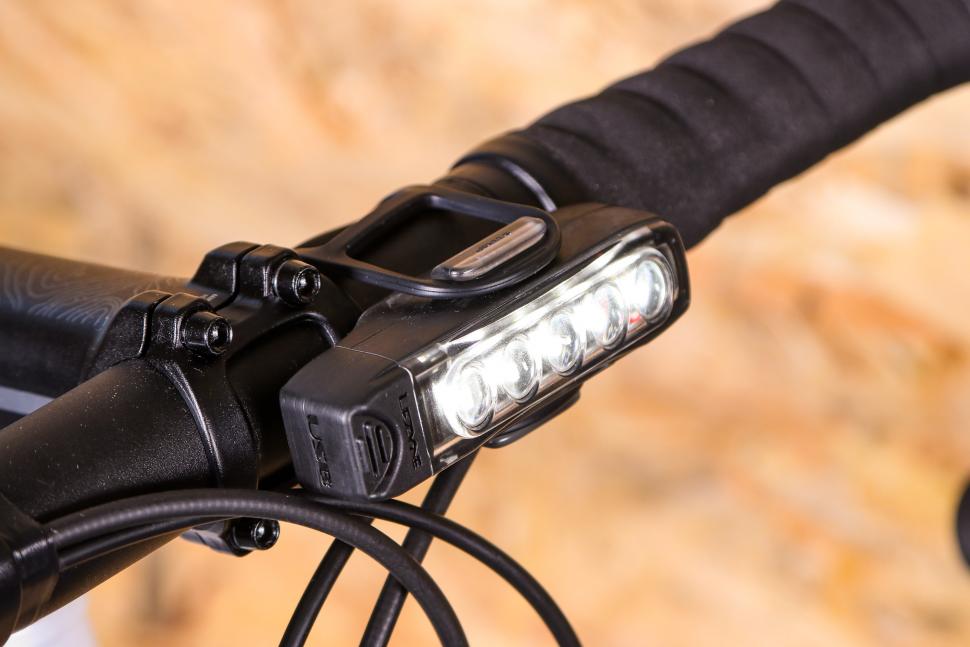

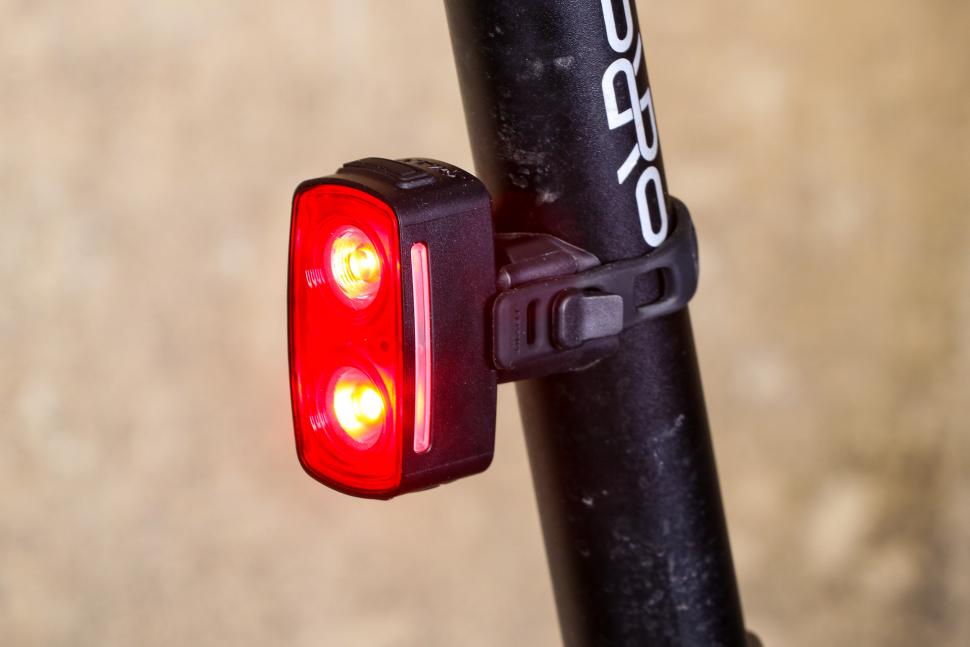

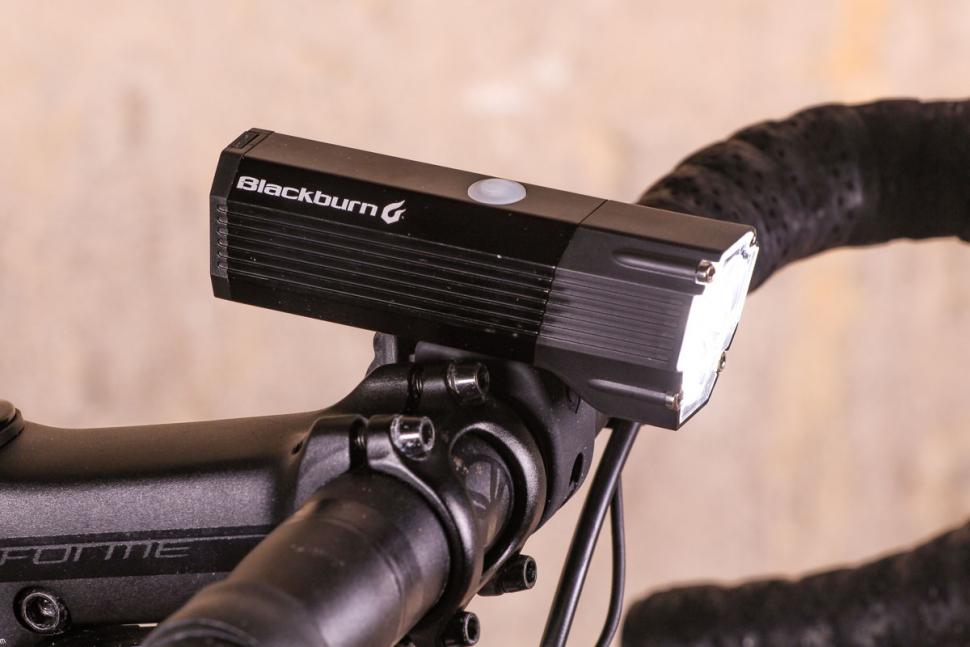
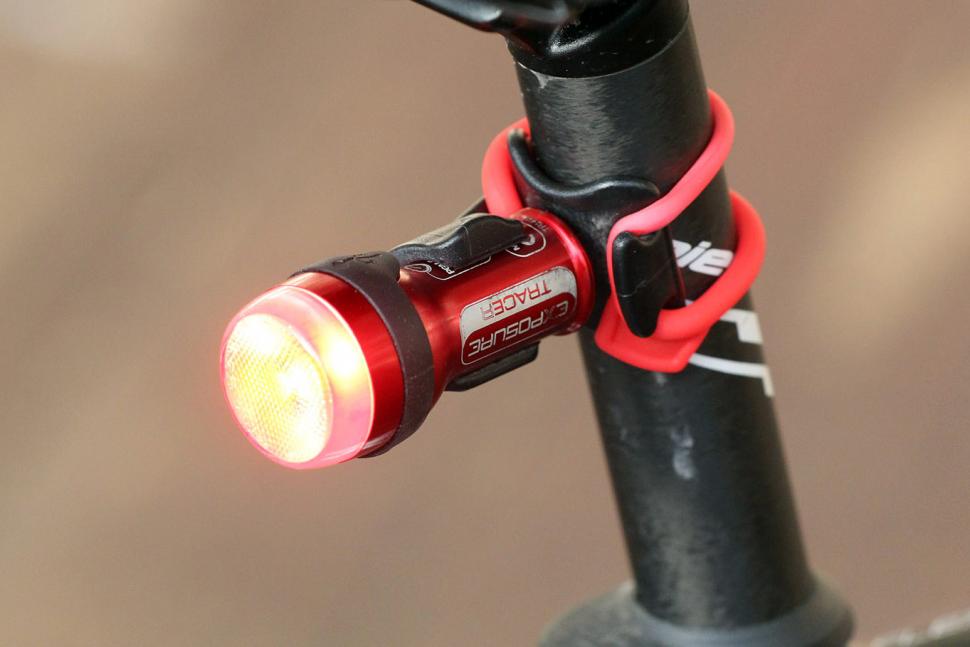

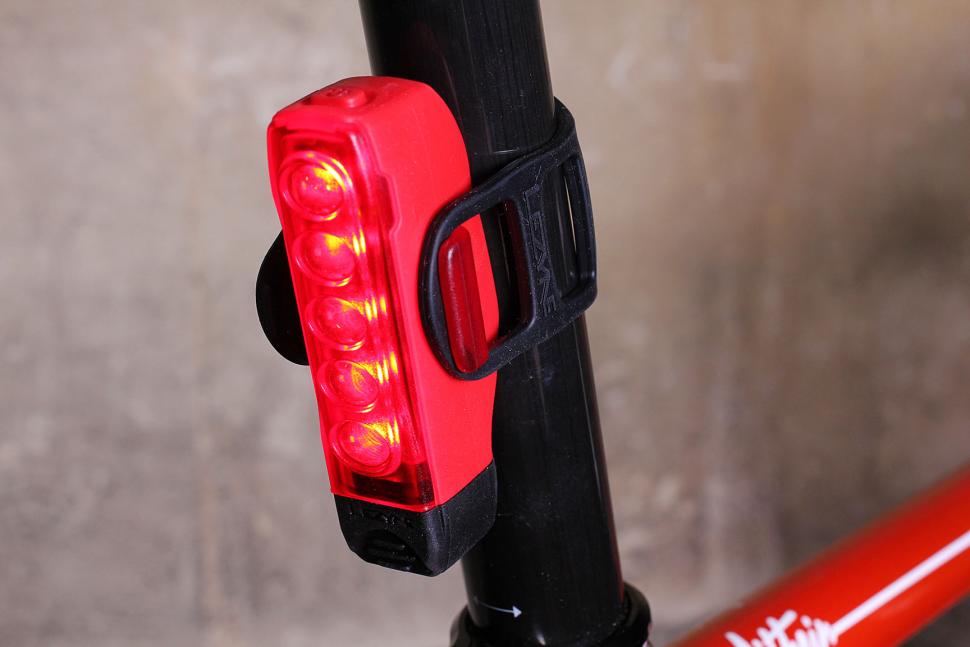
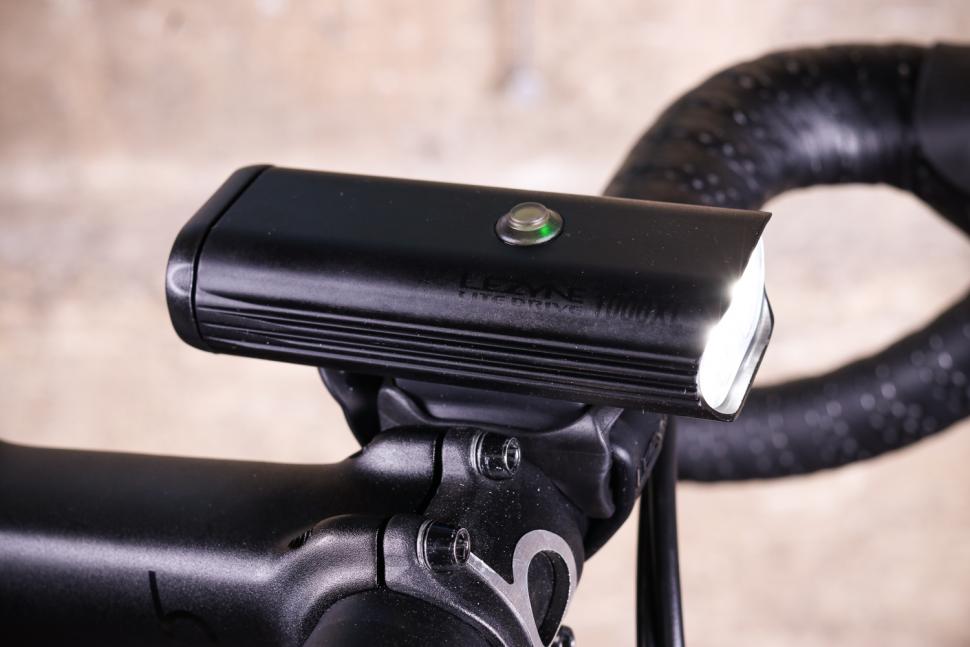
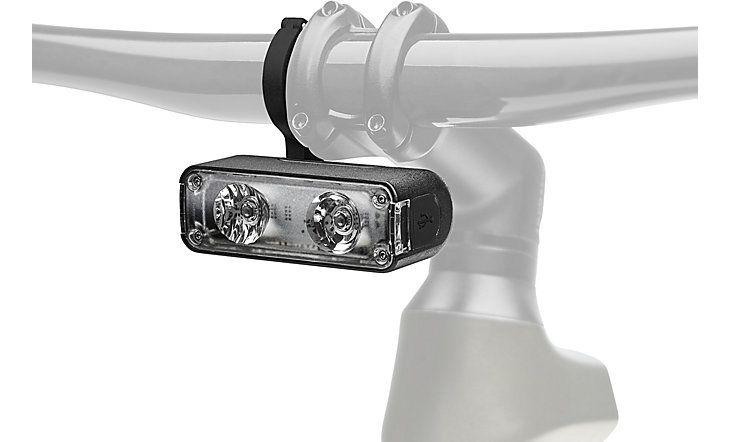
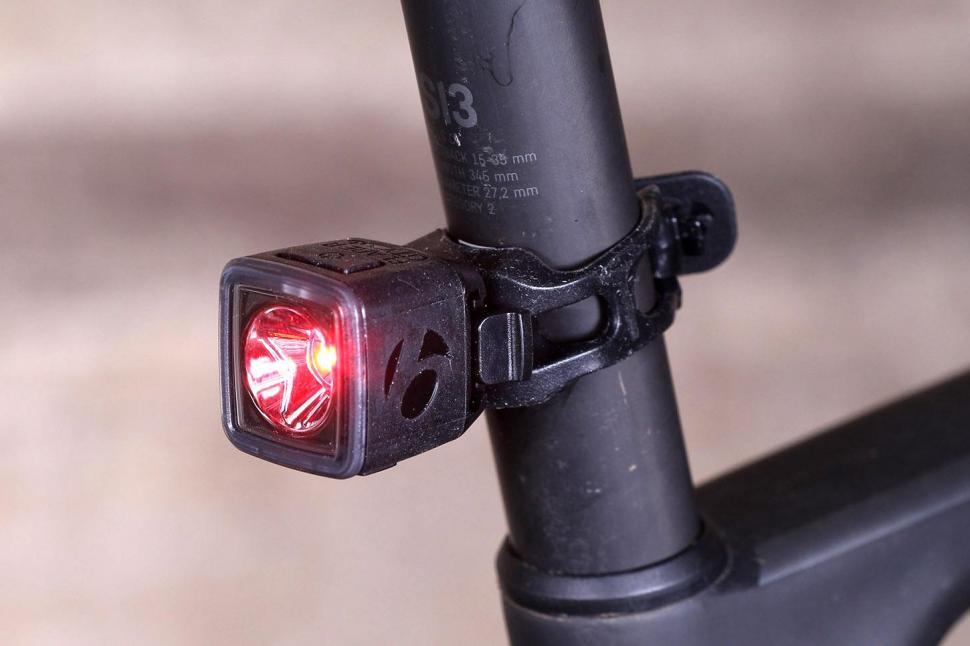
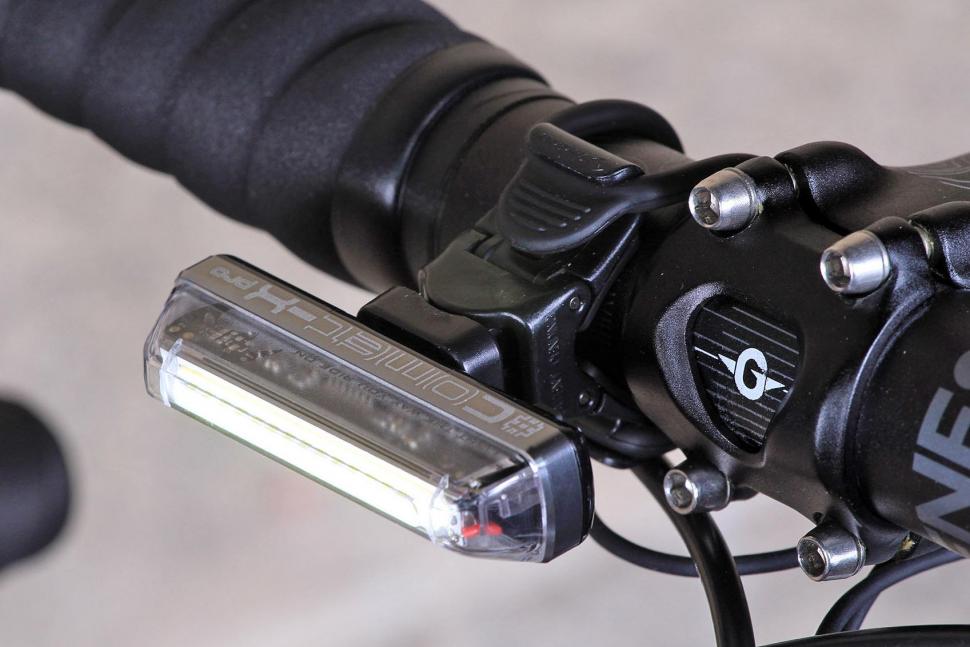
Add new comment
121 comments
Why not read the study before proposing a list of questions of what's wrong with it?
As a driver I now never drive with full beam headlights on, and am now of the opinion they should be banned. Drive to the conditions.
As a cyclist, since my friend was killed this year in full daylight, I now always have front and rear lights, as do all the people I ride with.
Having read these comments, I'm going to stop using lights. Ain't no way anyone is calling ME a victim if I get run over by someone who didn't see me....
Good work: you'll feel better for it.
I use daytime lights to improve my chances of being seen by motorists, my choice.
ideal world I wouldn’t have to use them.
I commute wearing reflectives, lights on, camera on - narrows down the excuses careless motorists award themselves, and if it’s not on camera it didn’t happen.
Should always be the riders choice
I use them all the time...besides it distracts the dogs
It's all well to talk about cyclists with no lights that you have seen- but how many have you missed and don't even know about them ?
Circumstances vary hugely. Pedal reflectors on a pitch black dual carriageway late at night are great - you see the guy miles off - even if he's in black and with no lights.
If he's pulling out of a sidestreet in front of you you might not see him until it's too late.
As a driver I know its important to be seen.
I know my life is more precious than not buying a few lights and I always make sure I have a front and back light that catches attention.
Just because its not proven it doesn't mean anything.
The old "every little helps" argument, with a spattering of "why wouldn't you do everything you can do to make yourself safe / seen?"
Both fine arguments, however by following these routes to their natural conclusion you either ultimately buy a car to make your journey in or find a way to avoid the journey altogether.
For me there has to be a base point... a point where it is deemed reasonable that a basically competent driver can be expected to see you and take the necessary avoiding action.
If thats not the case with the current legislation then we have a problem, but that problem should sit with driver training and law enforcement, not pushing ever greater requirements on to vulnerable road users.
The other day, I was driving my car at night, and some dude on his bike came towards me on his bike, with no lights, drressed head to foot in black. "what an idiot" i said to myself, "he's going to get himself killed" I said. Then I realised, I had had no problem at all seeing him, my lights did their job and he was clearly visible.
I am average at driving at best.
My point is that we should not allow society to continually decrease the level of driver competence and responsibilities placed on the motorist. we should not base safety standards on the lowest current standard of legal driving, and readdress this further downwards every time a driver stoops to an ever lower low. We need to stand up and demand better education of all road users and a higher standard of testing / regulation.
Totally agree, as do the current regulations, by and large. The 'cover yourself in flashing plastic' campaign was largely driven by organisations with a vested interest in peddling flashing plastic, and, unfortunately, has taken hold to such an extent that flashing plastic coverage is referred to in court cases, where it is irrelevant.
True, however I was riding my bike recently and the same yoof (or one of millions like him - shit mountain bike, smoking weed etc.) jumped off the curb right in front of me.
My lights aren't set up to illuminate the pavement, cars probably have a better field, but still if something approaches side on then you're less likely to picke them out.
On the other hand, I'd be quite happy if Darwinism kicked in occasionally...
I had exactly the same experience on Saturday night driving home; two yoofs on mountain bikes, dressed in blacks and greys, hoodies, no lights.
My first thought was numbskulls without lights but then I too realised I had seen them in plenty of time.
I think we all need to re-read Bez's (of this manor) excellent article on how lights were forced on cyclists by motorists. https://beyondthekerb.org.uk/the-wedge/
It was the thin end of the wedge and the motoring industry won't stop until cyclists and pedestrians alike are mandated to wear hi-viz and lights. Now we are feeding this by using daytime lights.
I've actually made a concious decision to stop wearing hi-viz. It sounds mad "surely you want to be seen?" but I'm quite certain that I am made from visible matter. Since I've started cycling in ordinary trousers (okay expensive Vulpine ones) and ordinary jackets (yes, sometimes expensive Vulpine ones) I've noticed fewer close-passes and certainly fewer acts of aggression.
Anecodotal I know, but I'm happy with my experience. I believe some motorists have a visceral hatred of cyclists and when they see someone is dressed in 'normal' clothes these nutters are more inclined to understand the guy on the bike is actually a normal human being, not some alien species.
As a motorcyclist I always ran with lights on - anything to wake up the dozy motorists. On a bicycle we are even more exposed to risk and the need to be seen is the first defence so my lights are on day and night.
I am dead against daytime lights on cars because if you can’t see a car in daylight what are you doing on the road? But against rows and rows of dazzling leds we now have no chance with our 1.5 volts.
If it’s law for cars you might argue it should be law for our bikes; and if so they should be a standard fitting and not a bolt-on accessory. Can’t see the law makers or the bike makers doing that any time soon so meanwhile take care.
If you can't see someone riding a bicycle in daylight what are you doing on the road ?
Perhaps they should change the driving test, not can you read a number plate but can you see a bike.
It's not so much "can you see the car?" but more "is the car likely to be occupied / moving / about to move?"
Sometimes, it can be quite difficult to determine if a car that looks parked has just stopped momentarily or perhaps is about to move off or any number of "what if..." scenarios. DRLs make a lot of sense in distinguishing between parked (sometimes badly parked) vehicles, moving vehicles etc especially in very slow moving urban traffic where there are a lot of distractions, a lot of people stop/starting, pulling out, pulling in. DRLs give other people an idea of what might be moving off and help with judging speed/distance.
This makes sense. What doesn't, to me, is that the regs only apply to headlamps.
(I still wonder how much extra light 'noise' it creates - alg's point.)
So many people saw the guy. That's good. If Gail Purcell had been paying attention she should have seen him too.
Just because there are really awful drivers out there doesn't mean that lights don't work. If you're not paying attention you won't see any thing.
Michael Mason (RIP) had both a flashing red rear light and a reflector and was noticed by many witnesses. But apparently the driver Gail Purcell was unable to see him... "there are none so blind as those who will not see".
There is a safety-scare coupled with unproven-yet-costly-remedies marketing move afoot in bicycling circles for quite some time. It started with freds wearing helmets and is now extending into the foolishness of daytime running lights, head-mounted lazer lights and other gimmicks. Wear and carry them if you want, but there is a distinct absence of evidence that they are going to do anything except empty your wallet.
So because one woman, who really ought not to be driving, failed to see Mason, daytime lights are pointless?
Fair enough. A single anecdote certainly proves little. However if daytime lights are as effective as many in this thread and the >50% in the poll seem to believe it certainly is odd that they did not work in this known incident.
As with helmets, hi-viz and other bolloxology which is now being marketed they are all claimed "treatments" on a population. A claim that they have a particular effect needs to be demonstrated, otherwise it's all "I feel that I am safer" and "my mate would have been run down if he hadn't had an argon laser mounted on his pedals".
For vehicles in the USA the effects of Daytime Running Lights (DRLs) seem unclear at best: https://crashstats.nhtsa.dot.gov/Api/Public/ViewPublication/811029
I think they are a good idea given the gadget induced distracted nature of drivers, at least here in the States.
I run front and rear in flash mode on both my commuter setups which might take me into situations that demand more visability (higher traffic pattern, etc.) That said I don't run any lights on my road bikes.
Have used Bontrager for last couple of years with great success. ION 350 R in front and Flare R in rear. Midday visability is impressive.
Not a fan of daytime lights for cyclists, as a cyclist I find them annoying, especially front lights. Certainly overkill on a bright day. On a dull day, or when starting early or finishing late, then yes of course.
As an aside, this conversation has already happened in the time-triallng world. TTing is of course done (mostly) in the daytime. Many testers are vocal about the desirability of a really bright rear light, Scorpion or similar, others less keen, but visit any TT and 90% of testers will have a rear light even though they are not mandated by the governing body.
Disagree. Many times in bright sunshine on open roads, moorland etc you can then drop into heavily wooded areas and it's the change from light to dark or going through dappled light where riders can be very difficult to spot, even hi-vis doesn't work. Lights cut through all of that.
I've worked on numerous long-distance charity events and we always point out to riders that although they may be starting in bright sunshine, they're travelling 100 miles point to point and the weather when they are arriving at point B in 7hrs time may be very different to the weather as they leave point A.
I'm in the always-on camp, a mate commented just yesterday about how good my Exposure TraceR is on Daybright mode (which has a built-in brake light as well, it's very cool - works off an accelerometer.)
Most TT events mandate them now even if CTT doesn't.
Most events advise their use, only South DC as far as I'm aware tries to mandate them and this is controversial, technically they are not able to overrule CTT.
Our local club (KLCC) mandates them for all club events. Open CTT events are run with CTT rules (so no light required).
It's all very well saying that it ought to be the motorists' responsibility to look properly for bicycles, but we all know they don't always, and there's no reason why we shouldn't try to help ourselves. Having an extra attention grabbing light on my bike is helpful. I do a lot of riding on NSL roads, and high vis isn't that visible from a distance during the day time. But a flashing or pulsing rear light is, and given no other vehicle displays a flashing rear light it helps warn motorists that they're approaching something with a likely much lower speed than them. Same thing at night - a pulsing rear light gives a motorist advance warning that the red dot in the distance is likely travelling more slowly than they expect.
I've got to agree to a certain extent. As a cyclist, motorcyclist and motorist in urban environment a day time pulse front light is very distracting and probably negates the safety benefits. Although on more open roads maybe there is more benefit.
Also cyclist should stop using the day time pulse at night, you just get blinded and can't see the rider.
Can't win can you?!
Use lights and they're too bright, too flashy, blinding, it's dangerous.
Don't use lights (or have ones that aren't bright/flashy enough according to the random scale of whoever is deciding what constitutes "too bright") and you're a reckless idiot who will be blamed by police/media etc when you're run over.
Same as the bell argument. Ring a bell and the pedestrian angrily tells you that they've seen you thanks and don't be so bloody rude with that ding ding. Don't use a bell and the pedestrian jumps a mile in the air as you safely bimble past at 8mph and screams "USE A BELL!" at you.
If you find them annoying its proof these lights have attracted your attention.
Where I live a lot of routes are under tree cover and simply a cyclist in dark clothing would be hidden in the shadows. Whilst Ive sometimes spotted another cyclist with a GOOD rear light, literally miles ahead.
If only some drivers could be trusted, because they cant it means I have to take extra precautions. In fact there's some busy main A-roads that I will never cycle along
Pages